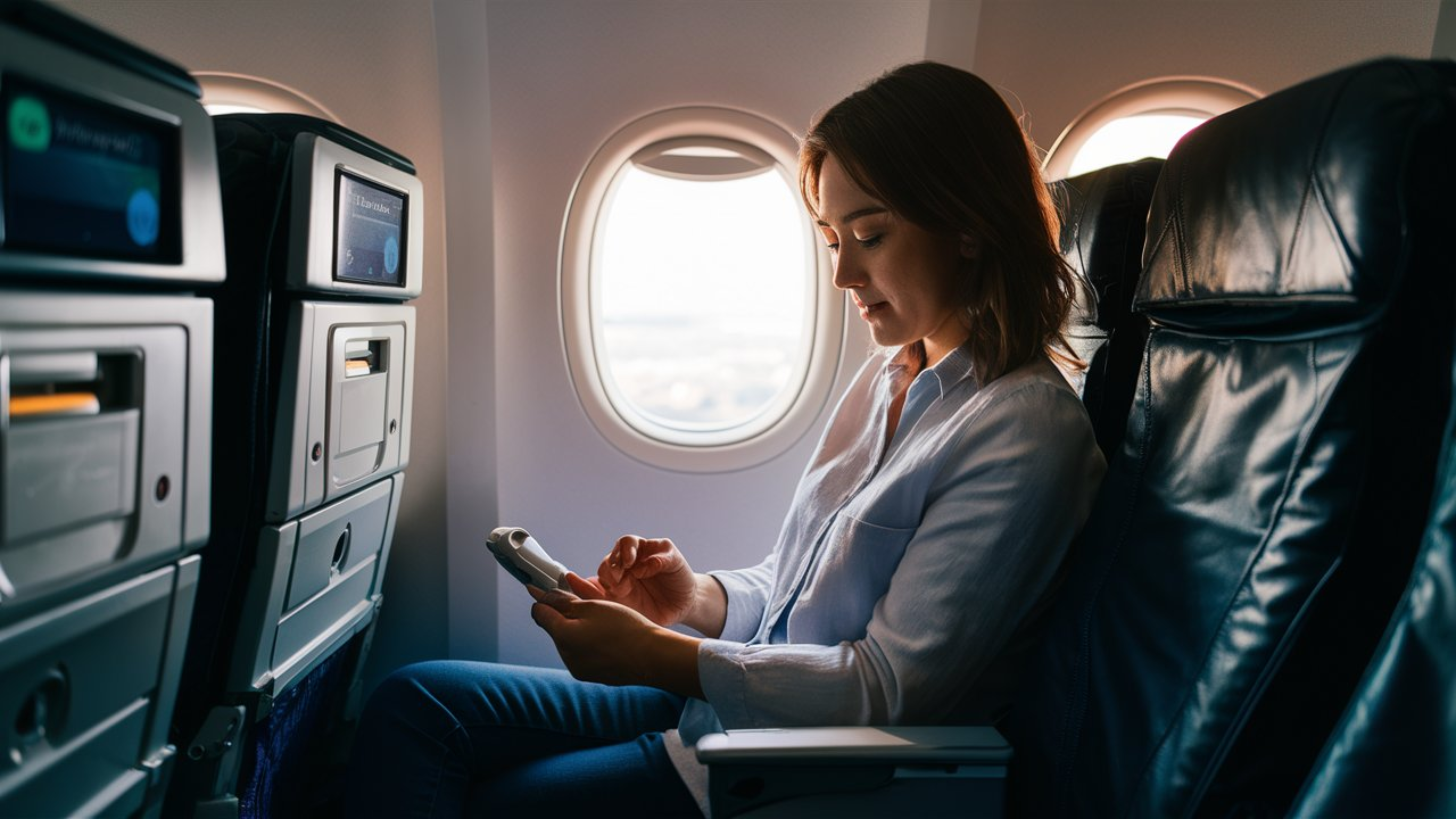Diabetics face a big task to manage the insulin needs while traveling, especially at airports where security is tight, and in flights subject to temperature changes” To overcome these challenges it is necessary for diabetics to plan well before leaving their homes. This guide is designed to provide an outline on how easy individuals with diabetes can travel by air using their insulin.
Preparing for Your Flight
Don’t forget to inform us before we start our journey. We should start off by acquiring a medical report from a doctor or a note explaining our condition plus what dosage of insulin one needs. This will help if at all there’s need of reference during checking at the airport, security officers among other possible points where questions may arise while we are away from home. Always make sure it is stamped with your own family doctor’s signature on his letterhead paper.
After that, pack enough insulin, syringes/pens as well as other diabetes supplies so they last throughout journeys inclusive of spares in case of unforeseen eventualities or delays. Sometimes having excess is better than running short, hence it’s considered a safe margin. On average one should carry double their daily dose of insulin and other necessary medications while traveling.
Make use of cooler bags or coolers equipped with ice packs to keep insulin under optimum temperatures while transporting it. If it gets in contact with extreme temperatures or temperatures fluctuation, its potency changes. You should think about acquiring a separate cooler or insulated bag made for carrying insulin only when travelling.
We also suggest that you split your insulin and supplies between your carry-on and checked baggage. This ensures that there will be another box immediately on hand for emergencies. Nevertheless, most of your insulin and supplies should preferably be in the carry-on baggage for easier access and to avoid any mishaps concerning checked baggage.
Packing Checklist for Insulin and Diabetes Supplies
- Insulin vials or pens (enough for the duration of your trip, plus extra)
- Syringes or pen needles
- Lancets for blood glucose monitoring
- Blood glucose meter and test strips
- Alcohol swabs
- Sharps container for used needles and lancets
- Cooler or insulated bag with ice packs
- Snacks and fast-acting carbohydrates for low blood sugar episodes
Airport Security Procedures
Travelers with diabetes may experience anxiety over airport security, although few simple procedures will relieve any fears. It is necessary to say that you have diabetes and that you are carrying insulin as well as your diabetes kit when being checked at the airport. Keep insulin and supplies in their original, labeled containers for easy identification.
It’s recommended to request a visual inspection or full-body pat-down instead of going through the X-ray machine, as it can potentially damage insulin. Be prepared to temporarily separate from your supplies for additional screening if necessary.
TSA Guidelines for Carrying Insulin and Supplies
The TSA has specific guidelines for transporting insulin and diabetes supplies through airline security. The TSA website states:
- Insulin and other diabetes-related supplies are permitted once they have been properly screened.
- Passengers are advised to separate insulin and supplies from other belongings for X-ray screening.
- In case that any passenger cannot disconnect from the pump, further inspection can be carried out on them.
- Passengers should let the TSA officer know if they have more than 3.4 ounces(100 milliliters) of liquids, insulin among others..
To go through security each time of going to the airport without being rushed or feeling stressed is crucial.
During the Flight
Proactive steps should be taken upon boarding for your insulin to remain at the correct temperature as well as effective blood sugar levels management. Inform attendants so that they let you use a cooler\refrigerator to store the drug for the time of flight.
Many airlines welcome travelers who require medical assistance, so being open and courteous about what you want will help. Use the insulated bag or cooler you brought along if you’re unable to get hold of a cooler or refrigerator, to store your insulin at the right temperature.
Change your insulin dosage and timing as desired to fit your travel schedule and the different time zones. It is always wise to seek guidance from your general practitioner before you travel abroad so that you may work on this issue. Ensure that you keep drinking fluids while on board any airplane even if it is just during the time spent flying; continue checking the level of your glucose all along. Carbohydrates which are broken down fast should be included when packing for emergency cases where there might be an occurrence of hypoglycemia which results in low blood sugar levels alongside some snacks.
Managing Time Zone Changes
Time zone changes can significantly impact insulin requirements and blood sugar levels. Here are some tips for managing insulin during time zone transitions:
- Eastward Travel: When traveling eastward, you’ll be “gaining” time. This means your day will be shorter, and you may need to adjust your insulin dosage accordingly.
- Westward Travel: When traveling westward, you’ll be “losing” time, and your day will be longer. You may need to increase your insulin dosage or split it into multiple doses to account for the extended day.
- Consult Your Doctor: Discuss your travel plans with your healthcare provider, and follow their recommendations for adjusting insulin dosages and monitoring blood sugar levels during time zone changes.
It’s also a good idea to carry a small snack or juice box in case of low blood sugar episodes during the flight.
In-Flight Tips
- Stay hydrated by drinking plenty of water and avoiding excessive caffeine or alcohol consumption.
- Move around the cabin periodically to promote circulation and prevent blood clots.
- Inform the flight attendants about your condition and insulin needs, so they can assist you if necessary.
- Consider wearing a medical alert bracelet or carrying an identification card indicating that you have diabetes.
International Travel Considerations
There are more things to consider when travelling to other countries. Make sure to read about rules for taking insulin or other diabetes treatment products along with you in the place where you are going. Check for any country-specific laws on medicine importation that may apply including those pertaining to insulin while it’s availability varies between nations if requested by them.
If necessary, get your doctor to convert the letter into the local dialect then have one copy of prescription carried as well as labeled insulin containers. To help in smooth customs clearance and avoid any confusion or delays this document is needed.
It’s also a good idea to learn a few key phrases related to diabetes and insulin in the local language, such as “I have diabetes” or “I need insulin.” This can help you communicate your needs in case of an emergency or if you encounter any language barriers.
Traveling with Insulin: Country-Specific Considerations
Before traveling please make sure you check on whether or not taking insulin into this country would be acceptable by its laws or regulations as different places have certain unique requirements so that it gets there safely for treatment purposes.
- European Union: Travelers can carry insulin and diabetes supplies for personal use without any specific documentation requirements.
- Canada: Insulin and diabetes supplies are permitted for personal use, but a doctor’s letter or prescription may be required for larger quantities.
- Australia: A valid prescription and doctor’s letter are recommended when carrying insulin and diabetes supplies.
- Japan: Travelers are advised to carry a prescription and a letter from their doctor explaining their condition and insulin needs.
Remember, regulations can change frequently, so it’s always best to check with the embassy or consulate of your destination country for the most up-to-date information.
Tips and Tricks
Here are some additional tips and tricks to ensure a hassle-free travel experience with insulin:
- Pack Extra: Pack twice the amount of insulin and supplies you think you’ll need, just in case of unforeseen circumstances or delays.
- Use Insulated Bags: Use a sturdy, insulated bag or cooler to protect your insulin from temperature fluctuations during travel.
- Keep Supplies Close: Keep insulin and supplies in your carry-on luggage to avoid potential issues with checked baggage.
- Inform Flight Attendants: Inform flight attendants about your condition and insulin needs, so they can assist you if necessary.
- Stay Vigilant: Stay vigilant and monitor your blood sugar levels closely during travel, as changes in routine and time zones can affect your insulin requirements.
Insulin Storage and Temperature Control
Proper insulin storage and temperature control are crucial during travel. Here are some tips to help ensure your insulin remains effective:
- Cooler or Insulated Bag: Invest in a high-quality cooler or insulated bag specifically designed for insulin storage. Look for products with excellent insulation and the ability to maintain a consistent temperature for extended periods.
- Ice Packs or Frozen Gel Packs: Pack plenty of ice packs or frozen gel packs to keep your insulin cool during transit and on the flight. Consider carrying extras in case some thaw during your journey.
- Insulated Pouch or Case: Use an insulated pouch or case to store your insulin during the flight. This can help maintain the proper temperature, even if you’re unable to access a cooler or refrigerator.
Remember to monitor the temperature of your insulin periodically and replenish or replace ice packs as needed.
Case Study: A diabetic traveler, Sarah, shared her experience of traveling with insulin. She stated, “Proper preparation and communication with airline staff made all the difference. I was able to store my insulin properly and manage my blood sugar levels without any issues throughout my trip.”
FAQs
How do I pack my insulin to keep it cold on a plane?
To keep your insulin cold on a plane, use an insulated bag or a specialized insulin travel case with gel packs. Make sure the gel packs are frozen before your trip, and pack the insulin in the middle to keep it consistently cool. Remember to carry your insulin and supplies in your carry-on bag to avoid exposure to extreme temperatures in checked luggage.
What are the rules for flying with insulin?
When flying with insulin, pack it in your carry-on bag, along with a letter from your doctor stating your medical need. Insulin and supplies like syringes and insulin pumps are allowed through TSA checkpoints, but inform the security officers. Use an insulated bag with frozen gel packs to keep it cold, and check airline regulations for any specific requirements.
Do I need a letter to fly with insulin?
Yes, it’s a good idea to have a letter from your doctor stating your medical need for insulin and related supplies. While not always required, it can help avoid any issues at security checkpoints and ensure a smoother travel experience.
Is insulin injection allowed in hand luggage?
Yes, insulin injections are allowed in hand luggage. Be sure to pack your insulin, syringes, and other related supplies in your carry-on bag. Inform security officers at the checkpoint, and having a doctor’s letter can be helpful to explain your medical needs.
How do you adjust insulin when traveling?
When traveling, especially across time zones, you may need to adjust your insulin schedule. Consult your doctor before your trip for specific advice. Generally, keep track of the time differences, adjust your insulin doses gradually, and monitor your blood sugar levels more frequently to manage any changes in your body’s insulin needs.
Conclusion
Traveling with insulin on an airplane may seem daunting at first, but with proper planning and preparation, it can be a seamless experience. By following the guidelines outlined in this guide, you can confidently embark on your journey without compromising your health or insulin management.
Before going on holiday, speak with your doctor about any advice or suggestions you may need that are tailored specifically for you. Your travel will be easier if you bring along all necessary documentation; hence consider having a noted written by doctor enhancing smooth time during security checks as well as customs clearance standpoints.Anticipate accordingly also include on the list “extra insulin, syringes etc”. Pack for unforeseen eventualities with enough of anything like insulin that needs cooling itself so that you won’t have to buy more stuff when you should be having fun at some tropical beach resort!
While you are travelling, you need to keep an eye on your blood sugar levels closely. Do not be afraid to ask for help if you need anything from the airline’s crew members. Act on time zone differences when changing insulin doses with respect to time zones and adhere to instructions from health care providers .
Remember, with the right precautions and a proactive approach, individuals with diabetes can travel confidently and safely, creating memorable journeys without compromising their well-being.
“With proper preparation and a positive mindset, traveling with insulin can be a manageable and enjoyable experience.” – Dr. Emily Wilson, Endocrinologist
By following the tips, tricks, and best practices outlined in this guide, you’ll be well-equipped to navigate the challenges of air travel while effectively managing your insulin requirements. Embrace the excitement of new adventures and explore the world with confidence, knowing that your diabetes won’t hold you back.




